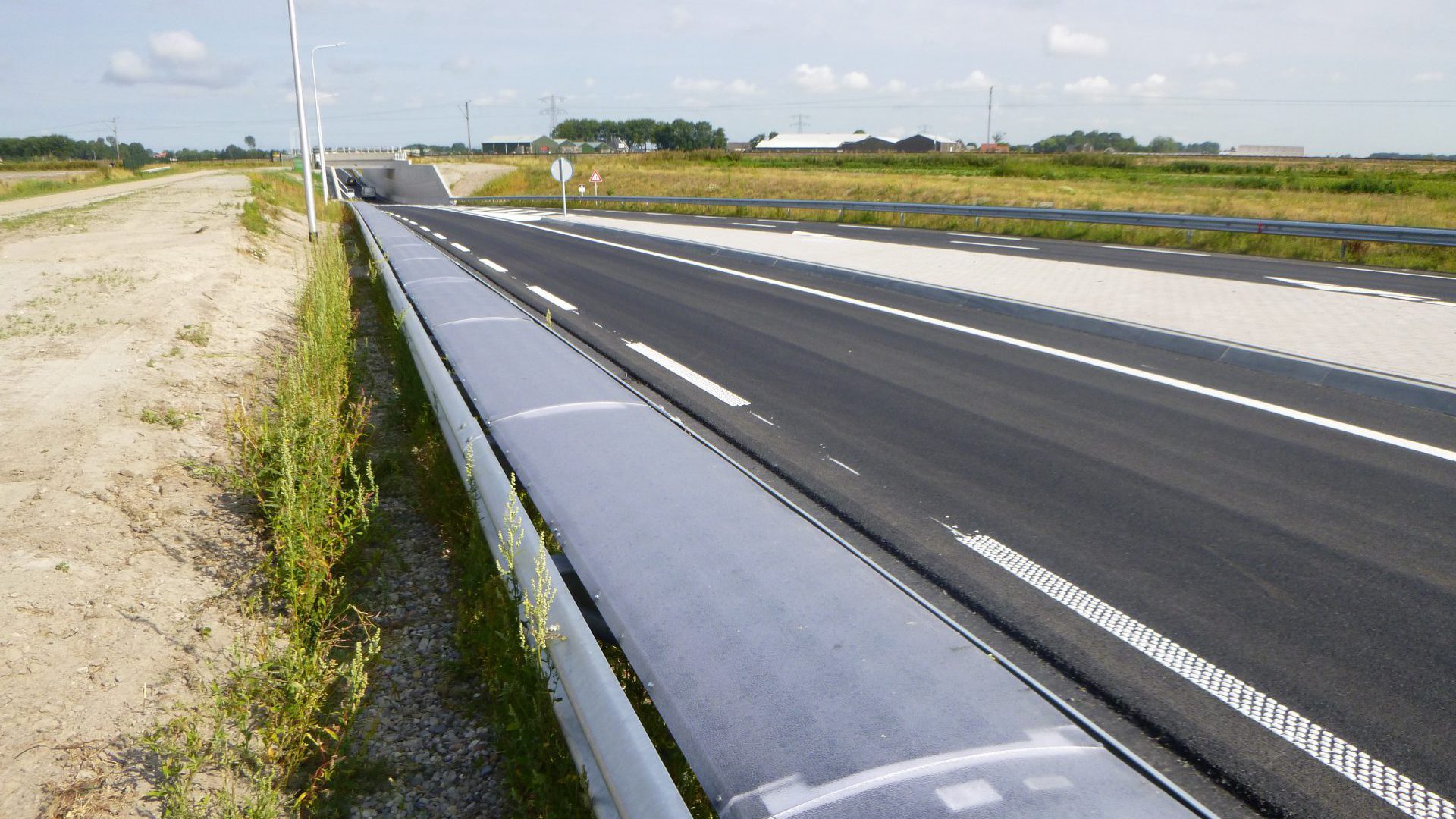
17 Jun Solar cells on guardrail: world’s first practice trail completed
TNO has conducted research together with the province of Noord-Holland and various partners into safe and sustainable generation of energy via flexible solar foil on crash barriers. With about 7,500 kilometers of guardrail in the Netherlands, a lot of solar energy can potentially be generated.
The test rig with flexible solar foil on a 72-meter double guardrail ran for a year along the N194 near Heerhugowaard. The design is the first of its kind worldwide. The one-year test that was recently completed shows that the set-up has continued to function well under various weather conditions.
There was no evidence of moisture penetration or defects and the set-up delivered energy to the end, although slightly less than expected. It also appears that the protective cover on the solar cells has more influence on the yield than expected. These new insights are useful to improve the technology and to be able to apply it in practice.
Influence of weather conditions
Flexible thin-film solar cells were used during the test as conventional solar panels are too rigid and dangerous in collisions. Types from different manufacturers have been used to determine whether they continue to function properly in various situations. And that has been the case. The influences of all seasons and weather conditions were measured in a year. For sustainable production of electricity, the cells, electronics and connections must be well protected against external influences, including heat, cold, sun, rain and other factors. The design is a careful trade-off between safety requirements, energy yield, costs and aesthetics.
Continued development
The yield of the test set-up was approximately 1,200 kilowatt-hours (kWh) per year. A yield of approximately 1,800 kWh / year was expected, the consumption of an average 1-person household. The further development of this type of applications of integrated flexible thin-film solar cells requires improvements of components, in particular the protective cover on the solar cells. Energy transport to the grid connection is also important because of the length of the installation. Costs must be further reduced in order to generate energy profitably and sustainably with an integrated system. During the redesign, therefore, the installation costs, often the largest cost item of a solar system, must also receive a lot of attention.
More applications
Generating energy by cleverly using flexible solar films is not only possible on crash barriers, but also on noise barriers or other infrastructure works. This contributes to a sustainable living environment. It is expected that more and more traffic management infrastructure will be applied in the future as part of the transition to smart highways.
Research partners
This project “Modular E-cover for Smart Highways” (MESH) was carried out by the province of North Holland together with TNO, Solliance Solar Research, Heijmans, Femtogrid and the Hogeschool van Amsterdam.
MESH is subsidized by the iDEEGO (innovatie Duurzame Energie en Energiebesparing Gebouwde Omgeving) scheme of the energy top sector, facilitated by Rijksdienst voor Ondernemend Nederland (RVO).
More information:
For more substantive information about MESH, please visit TNO.nl. Interested parties can contact TNO or the Service Desk of the province for questions, by telephone on 0800 0200 600 (toll free) or by email: servicepunt@noord-holland.nl.
Photo: Guardrail with solar cells along the N194 near Heerhugowaard

